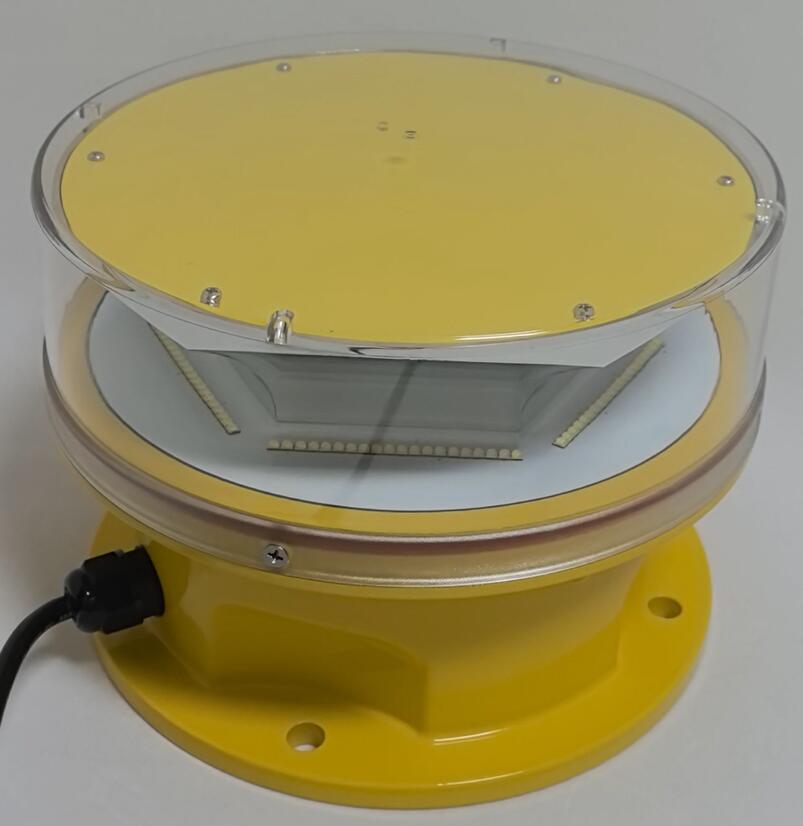The Guiding Glow of Medium Intensity Aviation Lights
In the realm of aviation, where the skies are a vast canvas of possibilities and challenges, one element stands out as a silent sentinel ensuring safety and navigation - the medium intensity aviation light. These unassuming yet crucial lights play a vital role in the complex world of air travel, guiding pilots through the darkness and adverse conditions.
The medium intensity aviation light is a specialized form of illumination designed specifically for the aviation industry. It is engineered to provide a reliable and distinct source of light that can be seen from a considerable distance, even in the most challenging circumstances. These lights are strategically placed around airports, on runways, and on aircraft themselves, serving as beacons of guidance and safety.
One of the primary functions of medium intensity aviation lights is to mark the boundaries of runways. In the darkness of night or during periods of low visibility, these lights act as visual cues for pilots, helping them to identify the edges of the runway and ensure a safe landing or takeoff. The medium intensity runway edge lights are typically white in color and are positioned along the sides of the runway. They provide a clear demarcation between the runway and the surrounding terrain, allowing pilots to maintain proper alignment and avoid potential hazards.

In addition to marking runways, medium intensity aviation lights also play a crucial role in taxiing. Taxiway lights are designed to guide aircraft as they move from one location to another on the airport grounds. These lights are usually blue in color and are positioned along the taxiways, providing pilots with clear directions and ensuring safe movement. Medium intensity taxiway lights help pilots navigate through the complex network of taxiways, avoiding collisions with other aircraft or obstacles.
Another important aspect of medium intensity aviation lights is their ability to provide approach lighting. Approach lights are designed to assist pilots during the final stages of approach to a runway. These lights are arranged in a specific pattern and intensity to create a visual pathway for the pilot, guiding them towards the runway. Medium intensity approach lights are often used in conjunction with other types of lighting systems, such as high intensity runway lights and visual approach slope indicators, to provide a comprehensive approach lighting solution.
| Medium Intensity Aviation Lights | HH7 |
The medium intensity aviation light is also essential for enhancing visibility during adverse weather conditions. Fog, rain, snow, and other forms of inclement weather can significantly reduce visibility, making it difficult for pilots to see the runway and other important landmarks. However, medium intensity aviation lights are designed to cut through these conditions, providing a reliable source of illumination that can be seen even in the harshest weather. Specialized medium intensity fog lights, for example, are designed to penetrate fog and provide enhanced visibility for pilots. These lights use advanced technology to diffuse the light and reduce glare, making it easier for pilots to see the runway and surrounding areas.
In addition to their practical applications, medium intensity aviation lights also have aesthetic value. The soft glow of these lights against the backdrop of the night sky can create a beautiful and captivating sight. Many airports around the world use medium intensity aviation lights as part of their lighting design, creating a visually appealing and welcoming environment for passengers and pilots alike. The lights can be arranged in unique patterns and colors, adding to the overall charm and character of the airport.
The technology behind medium intensity aviation lights is constantly evolving. As the aviation industry continues to advance, new materials and designs are being developed to improve the performance and efficiency of these lights. For example, LED technology is increasingly being used in medium intensity aviation lights due to its energy efficiency, long lifespan, and superior brightness. LED lights consume less power than traditional lighting systems, reducing energy costs and environmental impact. They also have a longer lifespan, reducing the need for frequent replacements and maintenance.
Furthermore, advanced control systems are being developed to optimize the performance of medium intensity aviation lights. These systems can adjust the intensity and pattern of the lights based on factors such as weather conditions, time of day, and aircraft movements. This not only improves visibility but also helps to conserve energy and reduce light pollution.
In conclusion, the medium intensity aviation light is a crucial element of the aviation industry. Its role in providing visibility, marking runways and taxiways, and enhancing safety during adverse weather conditions cannot be overstated. As technology continues to advance, we can expect to see even more innovative and efficient medium intensity aviation lights in the future, further enhancing the safety and efficiency of air travel. Whether it's a clear night or a stormy day, these lights will continue to shine brightly, guiding pilots and ensuring the smooth operation of the aviation industry.
